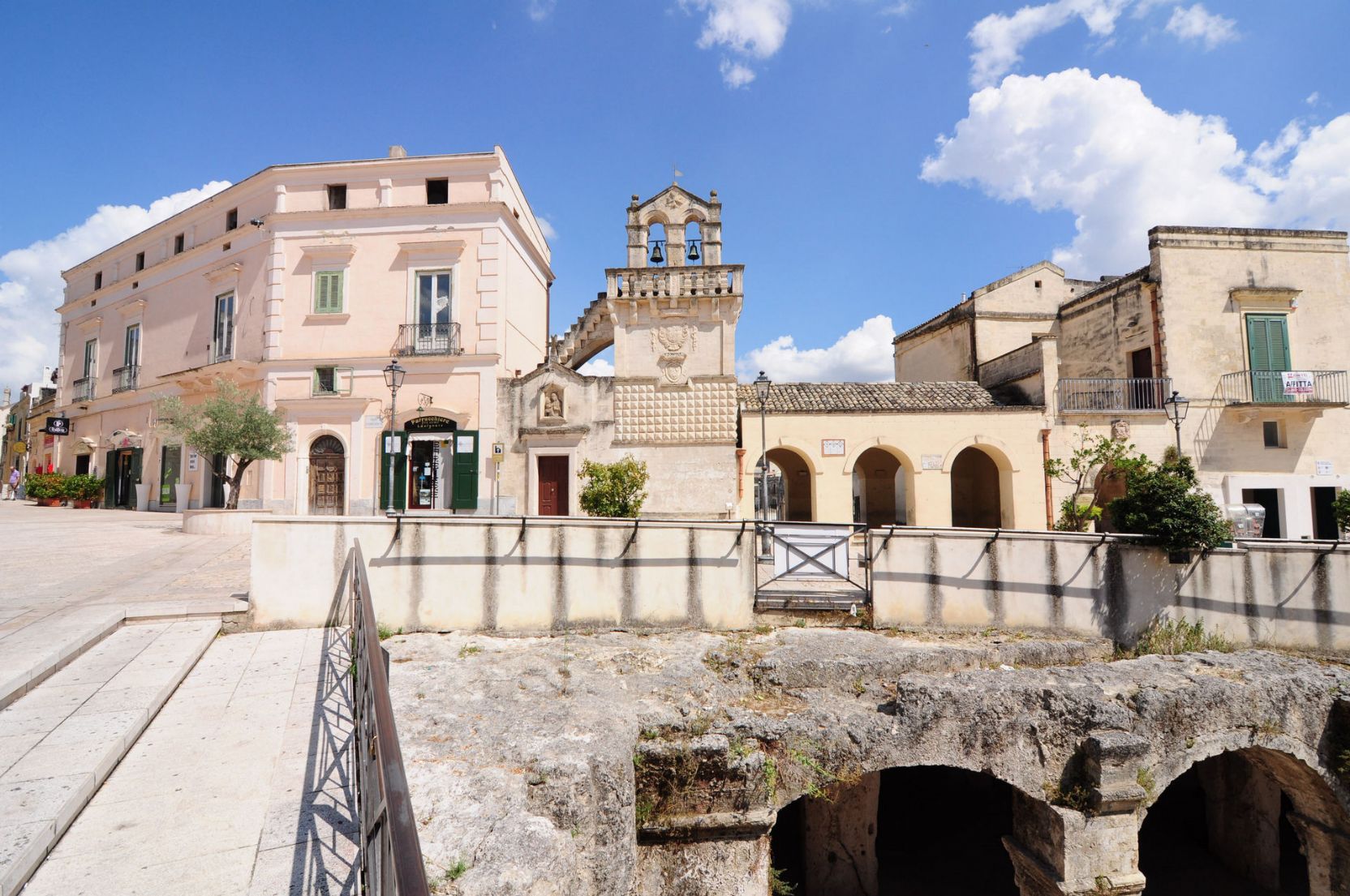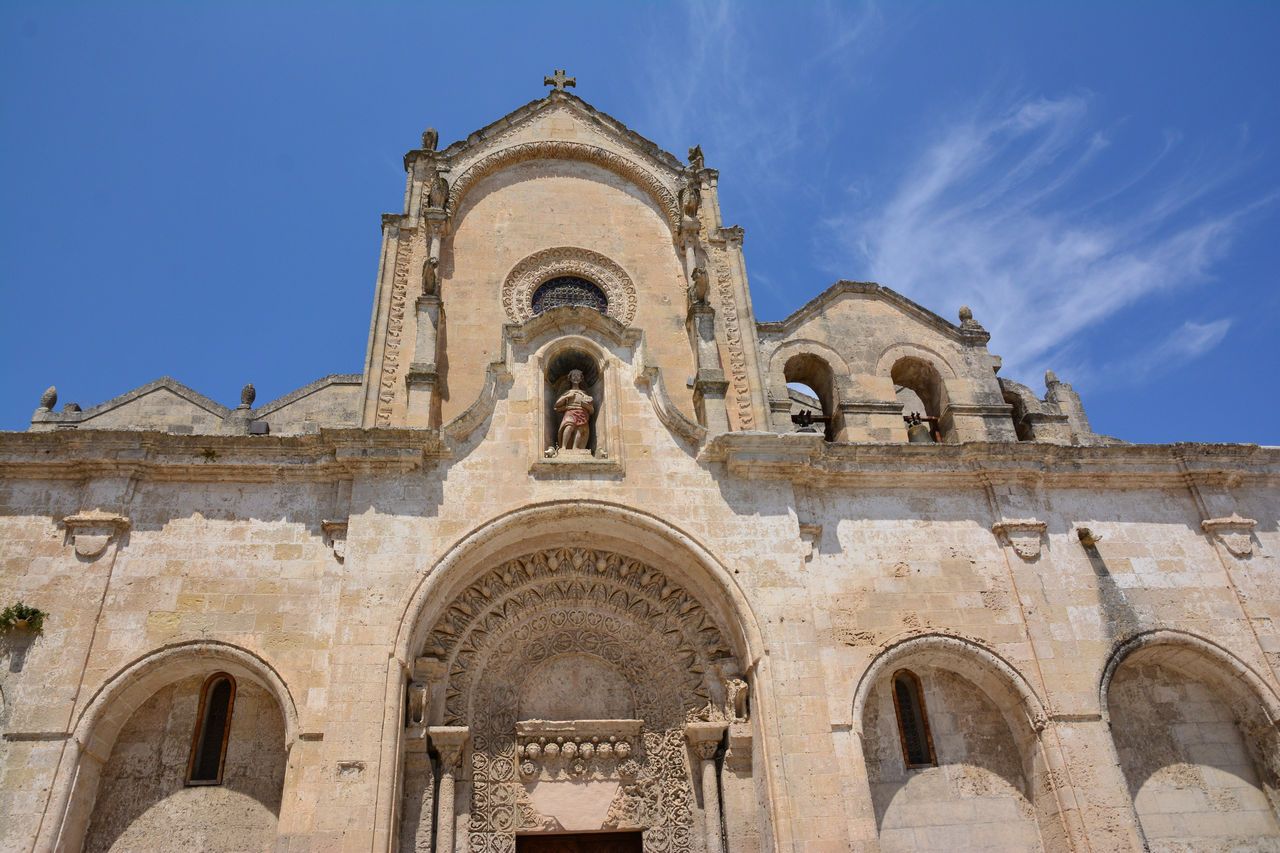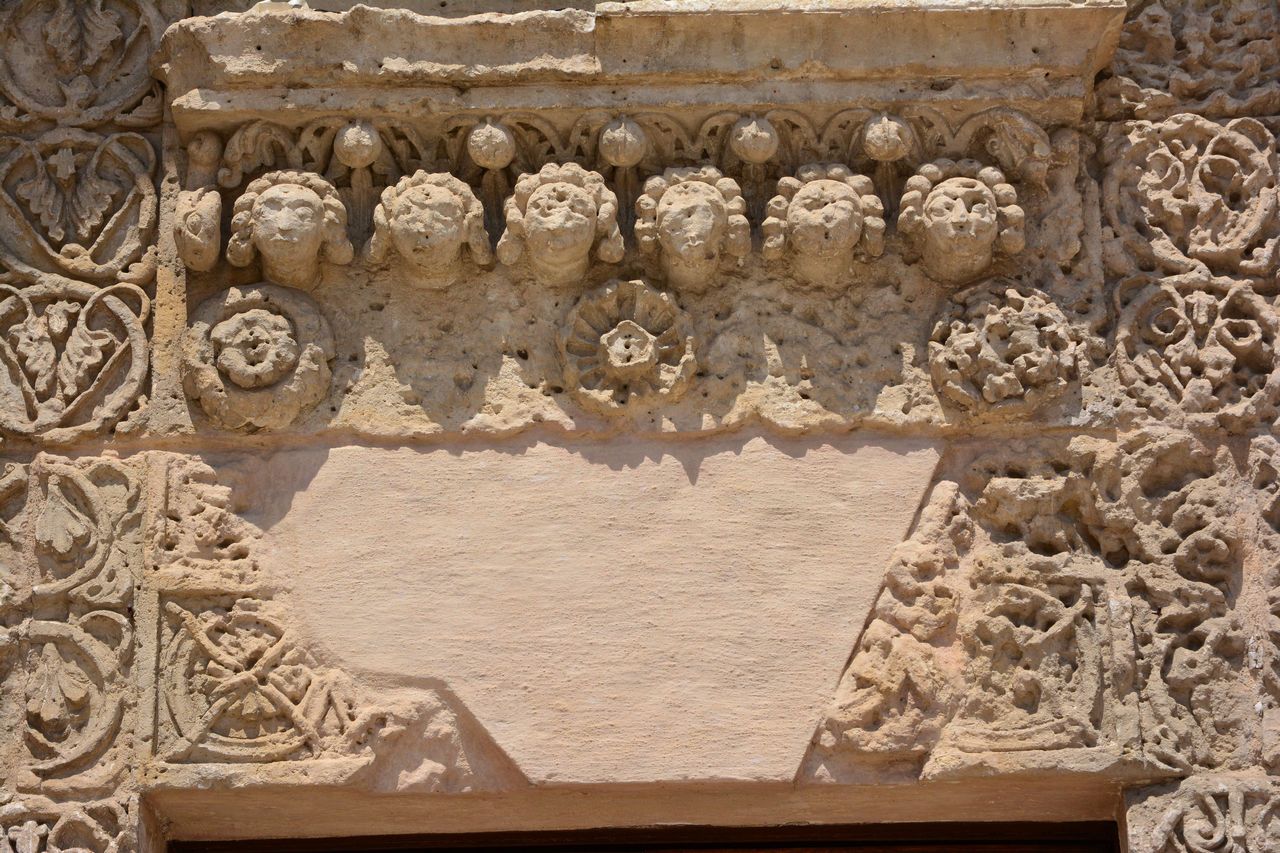The historic center of Matera extends over the plateau overlooking the ancient urban center of the Sassi di Matera, a UNESCO World Heritage Site. This area is the beating heart of the modern city, but it still preserves the signs of past eras, visible in its palaces, churches, squares, and hypogea.
Visit the historic center of Matera
The historic center of Matera is much more than a collection of monuments: it is a journey through the urban history of southern Italy, among aristocratic palaces, Baroque churches, ancient caves, and breathtaking views. Ideal for cultural walks, guided tours, or simply getting lost among its cobbled streets, the historic center is the perfect starting point for exploring all the beauty of the City of Stones.

Historic center of Matera
Via San Biagio: an itinerary between two masterpieces of medieval architecture
Another important axis of Matera's historic center is Via San Biagio, one of the most characteristic and historically rich arteries of the city, which runs alongside the Sassi di Matera and where there are numerous access points to the ancient districts. Along this street are two of the most important medieval churches in Italy: San Giovanni Battista and San Domenico.The Church of San Giovanni Battista, built in the 13th century by the Hospitaller monks, is one of the finest examples of Apulian Romanesque architecture in Basilicata. With its austere façade, finely decorated portals, and elegant central rose window, it is a must-see for lovers of medieval art and history. The interior, with three naves, houses carved capitals and architectural details of great value.
A little further on, at the end of Via San Biagio, stands the Church of San Domenico, founded at the beginning of the 14th century and subsequently remodeled in the Baroque period. The church still retains Gothic and Romanesque elements, particularly in the façade and rose window. Overlooking Piazza Vittorio Veneto, it is one of the religious and architectural symbols of the historic center. Strolling along Via San Biagio means immersing yourself in an atmosphere suspended between the Middle Ages and the Baroque period, with evocative views, historic buildings, and the unique perspectives of the entrances to the Sassi di Matera.
A layered city: discovering the underground chambers

One of the most fascinating aspects of Matera's historic center is its underground stratification. Beneath some of the main squares, such as Piazza Vittorio Veneto and Piazza San Francesco, there are monumental underground chambers that represent the oldest level of the urban settlement. Among these, the famous Palombaro Lungo stands out, an enormous cistern carved into the rock with walls up to 15 meters high, once accessible even by boat. Next to it are other cavities of historical interest, such as the rock church of the Holy Spirit, dating back to the 10th century.
Piazza Vittorio Veneto: the modern heart with ancient roots

Dominated by the imposing Palazzo dell'Annunziata, a former convent now home to the Provincial Library, Piazza Vittorio Veneto is one of the landmarks for visitors to Matera. The same square is also home to the Prefecture Building, the Church of San Domenico, and the Church of the Knights of Malta. The openings that dot the pavement offer a glimpse of the underground chambers below, providing a first look at the hidden city.
The 18th-century axis: Matera's monumental streets

Walking along the 18th-century axis, so called because it took shape between the end of the 17th and 18th centuries, you will encounter some of Matera's most important squares: Piazza Vittorio Veneto, Piazza San Francesco d'Assisi, Piazza del Sedile, and Piazzetta Pascoli. Along this route, noble palaces, former convents, and historic churches alternate, recounting the urban development of the city in the modern era.
From Piazza San Francesco to Via Duomo: an itinerary between faith and nobility
Going up towards Piazza San Francesco d'Assisi, you will find the 17th-century church of the same name, one of the most important religious buildings in the center. From here, the route splits: on the right is Via Ridola, dedicated to the archaeologist Domenico Ridola, while on the left is Piazza del Sedile, the former site of the Town Hall and now home to the Conservatory.
From Piazza del Sedile, take Via Duomo, a narrow cobbled street lined with aristocratic palaces that leads to Matera Cathedral, built in 1270 in the Apulian Romanesque style. Its bell tower rises above the city, offering a landmark visible from every corner. The interior and exterior of the church are rich in architectural and artistic details that are well worth a closer look.
The noble palaces around the Cathedral
Surrounding the Cathedral are the historic residences of Matera's most influential families of the past: Palazzo Gattini (the Gattini Counts), Palazzo Venusio (the Marquises of Venusio), and Palazzo Malvinni Malvezzi (the Malvinni Malvezzi Dukes). These buildings not only represented the economic power of the families who lived in them, but also served as defensive strongholds protecting the mother church.
Via Ridola and Piazzetta Pascoli: culture, museums, and viewpoints
Walking along Via Ridola, you will come across the Church of Purgatory, with its fascinating Baroque façade. Further on is the Domenico Ridola National Museum, which houses artifacts from the first archaeological campaigns in the Matera area, many of which were conducted by Ridola himself.
The walk ends in Piazzetta Pascoli, dominated by Palazzo Lanfranchi, home to the National Museum of Medieval and Modern Art of Basilicata. From the adjacent viewpoint, there is a spectacular view of Sasso Caveoso and Monterrone, the rocky spur where the rock churches of Santa Maria de Idris and San Giovanni in Monterrone stand, one of the most photographed views in Matera.






 Sito Italiano
Sito Italiano